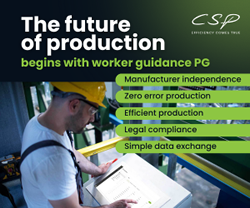Rise in Robotics Requires New Tax Approach, EU Report Warns
China's Midea buys nearly half of German robotics firm Kuka
10 Ways Machine Learning Is Revolutionizing Manufacturing
Industry 4.0 breathes new life into cybersecurity
Printed Perforated Lampshades for Continuous Projective Images
Companies, employees not quite ready for cognitive technology wave of robotics, AI, machine learning
'UK manufacturers fail to understand Industry 4.0'
FIRST 3D TOOLS PRINTED ABOARD SPACE STATION
Midea makes bid for robotics maker Kuka official
MIT Food Computers
How Big Area Additive Manufacturing is Enabling Automotive Microfactories
Computational Hydrographic Printing
Carnegie Mellon Taps Private Gift for Engineering Simulation Center
How Small Manufacturers Can Leverage Smart Manufacturing
3D printing of patterned membranes opens door to rapid advances in membrane technology
Records 1111 to 1125 of 1272
First | Previous | Next | Last
Featured Product

